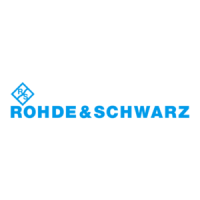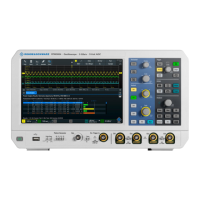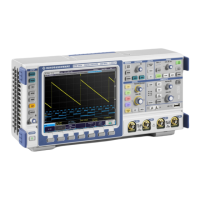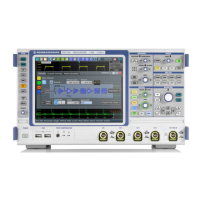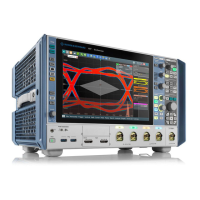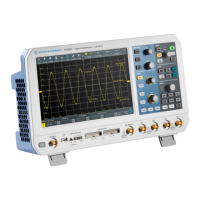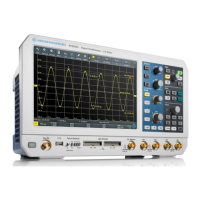Waveform analysis
R&S
®
RTM3000
140User Manual 1335.9090.02 ─ 09
Upper Level
Sets the upper voltage threshold for runt detection. A negative runt crosses the upper
level twice without crossing the lower level.
Remote command:
SEARch:TRIGger:LEVel:RUNT:UPPer on page 494
Lower Level
Sets the lower voltage threshold for runt detection. A positive runt crosses the lower
level twice without crossing the upper level.
Remote command:
SEARch:TRIGger:LEVel:RUNT:LOWer on page 494
Comparison
Sets the condition how the measured runt width is compared with the given limits.
The comparison works like the comparison of the width trigger, see Chapter 6.6, "Width
trigger", on page 85.
Remote command:
SEARch:TRIGger:RUNT:RANGe on page 494
Width
Sets the reference runt pulse width, the nominal value for comparisons.
Remote command:
SEARch:TRIGger:RUNT:WIDTh on page 495
Variation
Sets a range Δt to the reference "Width" if comparison is set to "Equal" or "Not equal".
The instrument finds pulses inside or outside the range width ± Δt.
Remote command:
SEARch:TRIGger:RUNT:DELTa on page 495
7.5.8 Data2Clock
The Data2Clock search - also known as setup/hold search - finds violation of setup
and hold times. It analyzes the relative timing between two signals: a data signal and
the synchronous clock signal.
Many systems require, that the data signal must be steady for some time before and
after the clock edge. Setup time is the time that the data signal is steady before clock
edge. Hold time is the time that the data signal is steady after clock edge.
► [Search] > "Search Type" = "Data2Clock" > "Setup"
The settings for Data2Clock search are provided in two menus. In the "Setup" menu,
you define the clock polarity, setup and hold times; and in the "Source Setup" menu
you define the waveforms to be used, and the levels and hysteresis for each source.
Search
